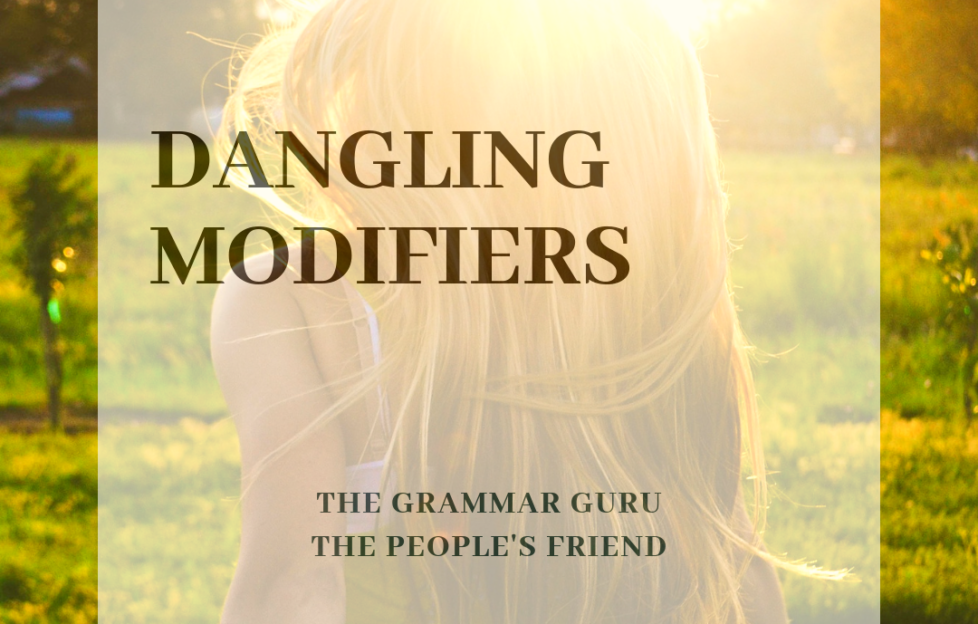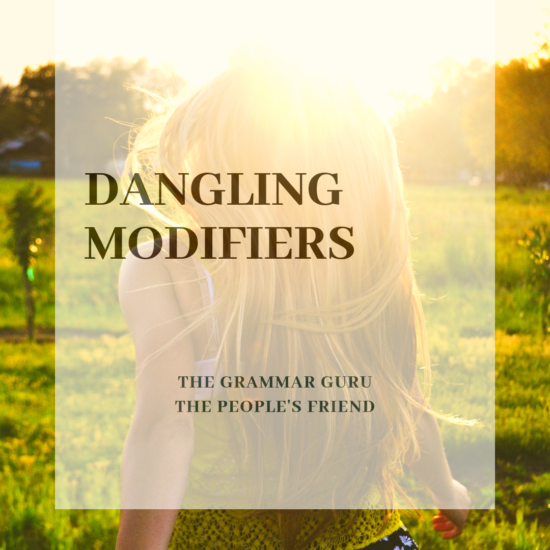Grammar Guru: Dangling Modifiers

The Grammar Guru is on a crusade against dangling modifiers. Hanging or dangling participles. Whichever name you prefer for this particular grammatical misdeed, it is one of the Grammar Guru’s biggest pet hates!
Put very simply, in a sentence containing a modifying clause, the modifier must relate to the thing being modified.
In other words, the two parts of the sentence must go together. Sounds simple, doesn’t it? Yet it’s astounding how often people get this wrong.
Here are some examples of correct usage:
Eating his packed lunch, the hiker took a moment to relax and enjoy the view.
“Eating his packed lunch” modifies “the hiker”. So this is correct.

With keen attention to detail, Susan drew up an exhaustive list of what needed to be done.
In this sentence, Susan is the subject, and “With keen attention to detail” is the modifier. It gives more information about Susan, the subject. Good.
As the above examples show, the modifier can come before or after the part of the sentence it relates to, and is usually separated from that part of the sentence by a comma. A handy hint for getting this right is to check that the two parts of the sentence on either side of the comma relate to each other.
Sadly, too many people simply do not understand this basic principle, and as a result create jumbled, sometimes nonsensical writing.
Here are some examples of incorrect usage:
Grilled until bubbling, my friends enjoyed the toasted cheese.
Really? You put your friends under a hot grill? “Grilled until bubbling” does not relate to “my friends”.
And what about this mangled mess?
Tall and thin beneath his jacket, a checked shirt was loosely tucked into well-worn cord trousers.
The “checked shirt” is “tall and thin”, is it? Really?
Do your writing a favour, and brush up on those modifiers – once you start spotting them, you’ll see them everywhere!
For more invaluable writing advice from the Grammar Guru, click the tag below.
And, while you’re here, why not take out a “Friend” subscription and check if our grammar is up to scratch?











